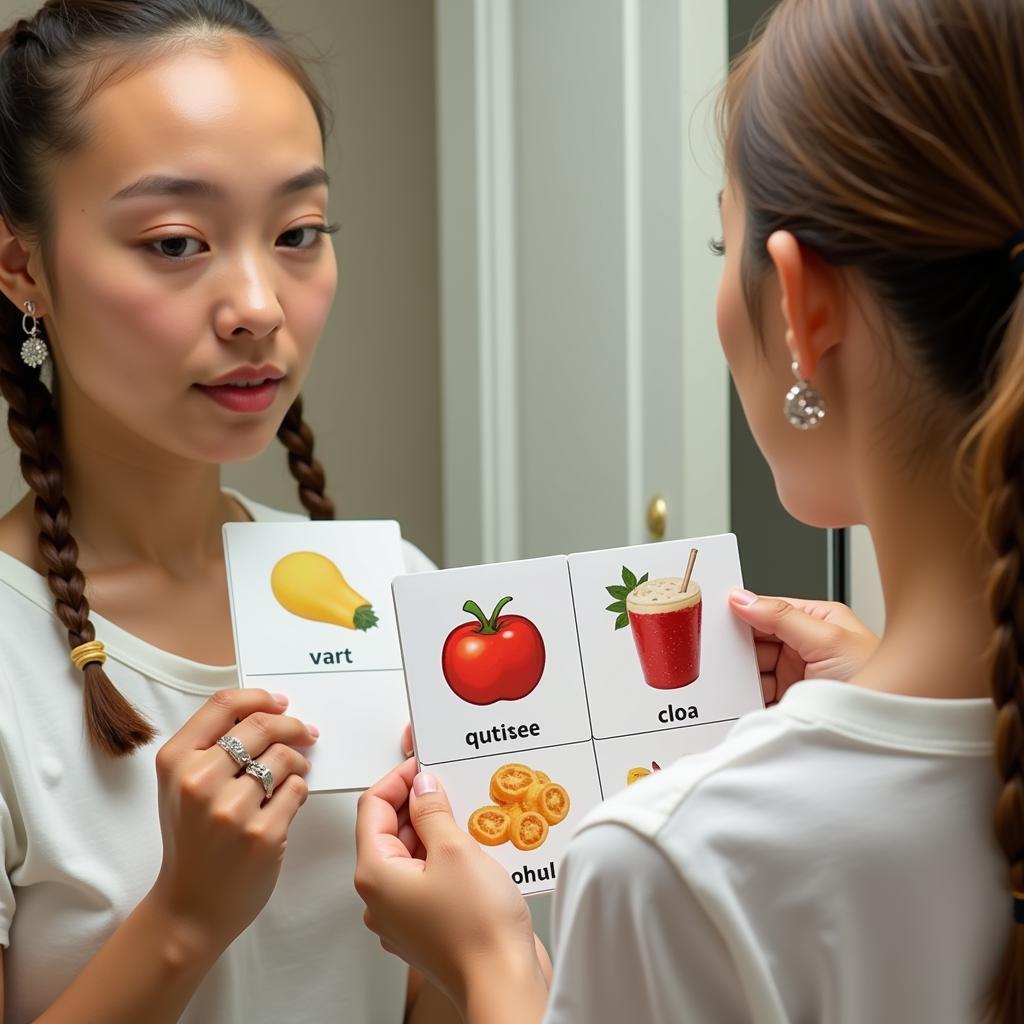Introducing your favorite dish in English can be a delightful way to share your culinary passions and cultural background. Whether you’re chatting with friends, participating in a language exchange, or simply practicing your English skills, being able to describe your favorite food is a valuable asset. This article will equip you with the vocabulary, phrases, and strategies you need to effectively introduce your beloved dish in English.
Describing Your Favorite Dish: A Step-by-Step Guide
Before diving into the specifics, let’s establish a structured approach to introducing your favorite dish.
Start with the Basics
Begin by stating the name of the dish. Is it Pho, Pad Thai, or perhaps Lasagna? Clearly pronounce the name and, if possible, provide a brief explanation of its origin. For instance, you could say, “My favorite dish is Bún Chả, a Vietnamese specialty from Hanoi.”
Describe the Ingredients
Next, describe the key ingredients. Are there any unique or noteworthy components? For example, “It’s made with vermicelli noodles, grilled pork, and a delicious fish sauce dipping sauce.” Be specific, using descriptive adjectives like “fresh,” “savory,” “spicy,” or “aromatic.”
Explain the Preparation Method
Briefly explain how the dish is prepared. Is it grilled, fried, steamed, or baked? Highlighting the cooking method can add another layer of interest. For instance, “The pork is marinated in a blend of herbs and spices before being grilled over charcoal.”
Share Your Personal Connection
Why is this dish your favorite? What memories or emotions does it evoke? Sharing a personal anecdote can make your introduction more engaging. “My grandmother used to make this for me every Sunday, and it reminds me of home.”
Mastering the Vocabulary of Flavor
Describing the taste and texture is crucial. Do you find it “savory,” “sweet,” “tangy,” or perhaps “umami”? Is the texture “crispy,” “creamy,” “chewy,” or “smooth”? Use vivid language to paint a picture in your listener’s mind. “The combination of sweet and savory flavors is simply irresistible.” For example, if you love sweets, you might want to explore vì em đây chỉ thích đồ ngọt.
Example Introductions
Here are some examples to inspire you:
- “My favorite dish is Sushi. This Japanese delicacy consists of vinegared rice combined with various ingredients, such as raw fish, vegetables, and seaweed. The delicate flavors and artistic presentation make it a truly special experience.”
- “I absolutely adore Pasta Carbonara. This classic Italian dish is made with spaghetti, eggs, cured pork, hard cheese, and black pepper. The creamy sauce and salty pork create a rich and satisfying flavor.”
Tips for a Smooth Delivery
Practice makes perfect. Rehearse your introduction a few times to ensure a smooth and confident delivery. Don’t be afraid to use gestures and facial expressions to convey your enthusiasm.
Enhancing Your Culinary Vocabulary
Expanding your culinary vocabulary can significantly enhance your ability to describe your favorite dish. Explore resources like online dictionaries, cooking shows, and food blogs.  Describing food in English You might also find resources on sở thích tiếng trung helpful for expanding your vocabulary in other languages.
Describing food in English You might also find resources on sở thích tiếng trung helpful for expanding your vocabulary in other languages.
Conclusion
Introducing your favorite dish in English is a wonderful way to connect with others and share your cultural heritage. By following the tips and techniques outlined in this article, you’ll be able to confidently and eloquently describe your beloved dish, leaving a lasting impression on your audience. Remember to be passionate, descriptive, and most importantly, enjoy the process! Now it’s your turn to share your culinary passion! What’s your favorite dish?
FAQ
- What are some common adjectives to describe food?
- How can I improve my pronunciation of food names?
- What are some useful phrases for describing cooking methods?
- How can I make my food description more engaging?
- What are some resources for expanding my culinary vocabulary?
- How can I overcome my nervousness when speaking English about food?
- What are some cultural considerations when discussing food in English?
You might also find information regarding children’s food preferences on con nít thích ăn or even some interesting topics like vợ yêu thích tán gái. For educational resources, you can check out giáo án tạo hình cắt dán theo ý thích.
Khi cần hỗ trợ hãy liên hệ Số Điện Thoại: 0915063086, Email: [email protected] Hoặc đến địa chỉ: LK 364 DV 08, Khu đô thị Mậu Lương, Hà Đông, Hà Nội 12121, Việt Nam. Chúng tôi có đội ngũ chăm sóc khách hàng 24/7.